| Photo of the month – February 2023 |
[German version] |
So they all rolled over …
or
The challenge of cylindrical cargoes
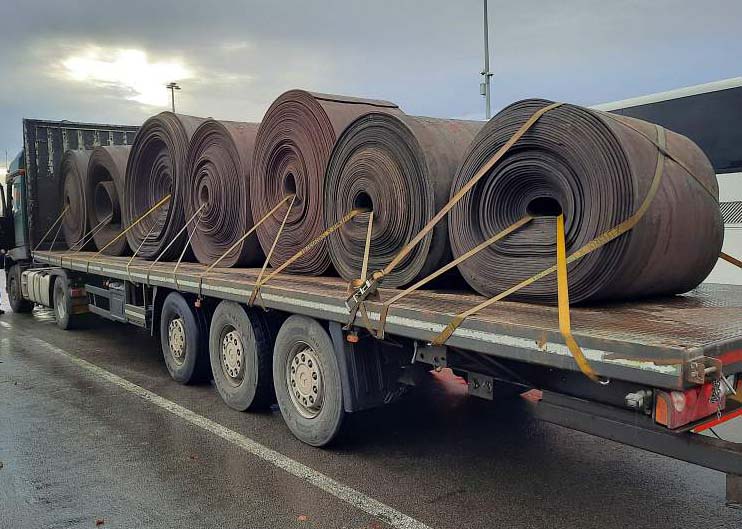
Figure 1 [Raymond Lausberg]
Seven rolls of used conveyor belt with a total weight of around 21 tonnes on a loading bed with a durbar plate surface. The load is secured by a mixture of direct and tie-down lashings, although almost all the belts are fulfilling both functions.
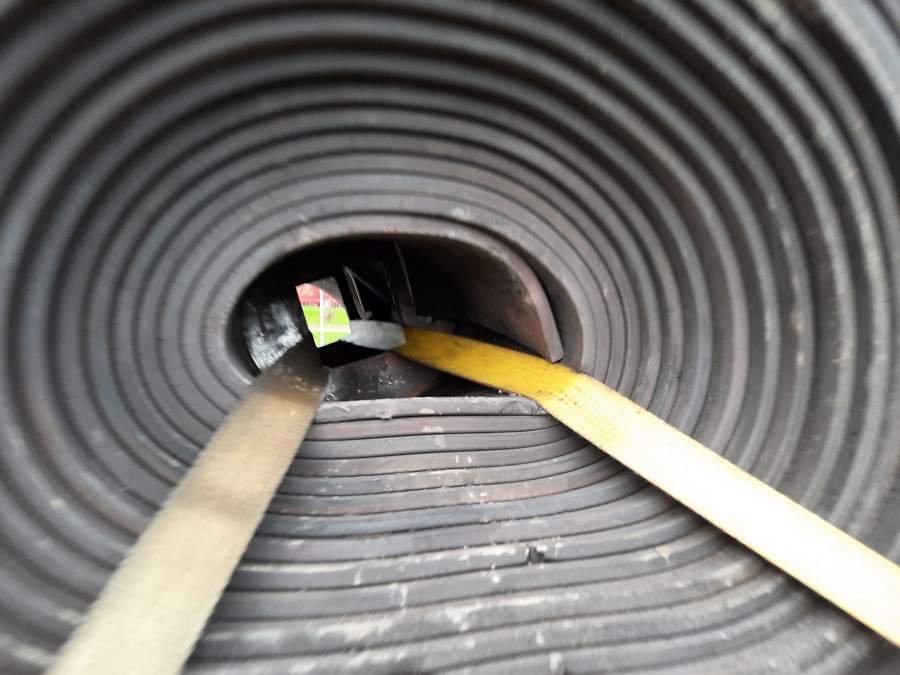
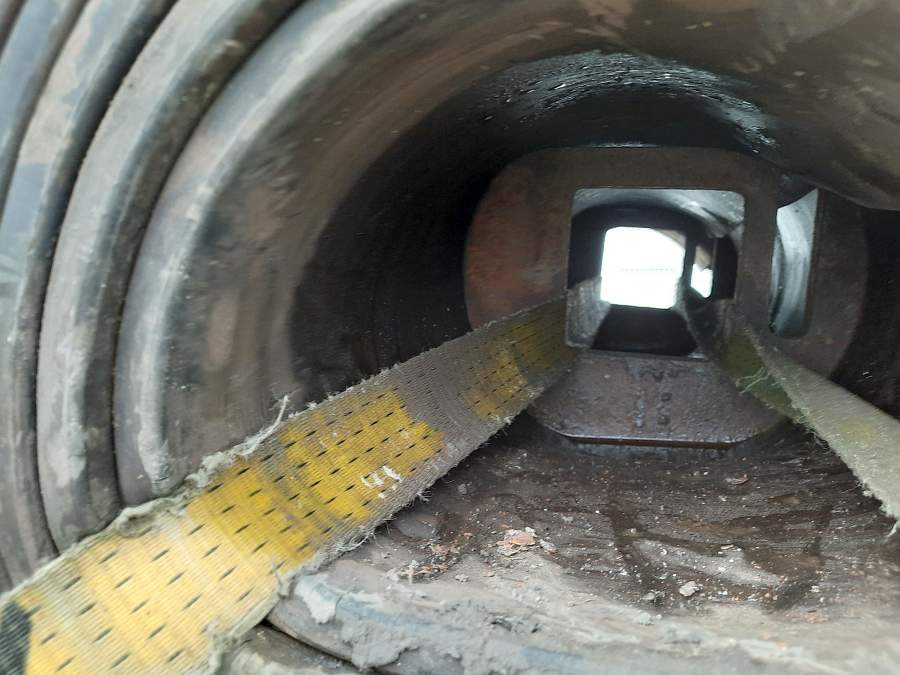
Figures 2 and 3 [Raymond Lausberg]
All the rolls had a steel core with a square central aperture. The belts were constricted to different degrees in two different places: On the one hand, where they passed over the edge of the rubber and, on the other, as they passed over the edge of the steel core. And as a result, the belts are fit to be scrapped, as can be seen in Figure 3 in particular.
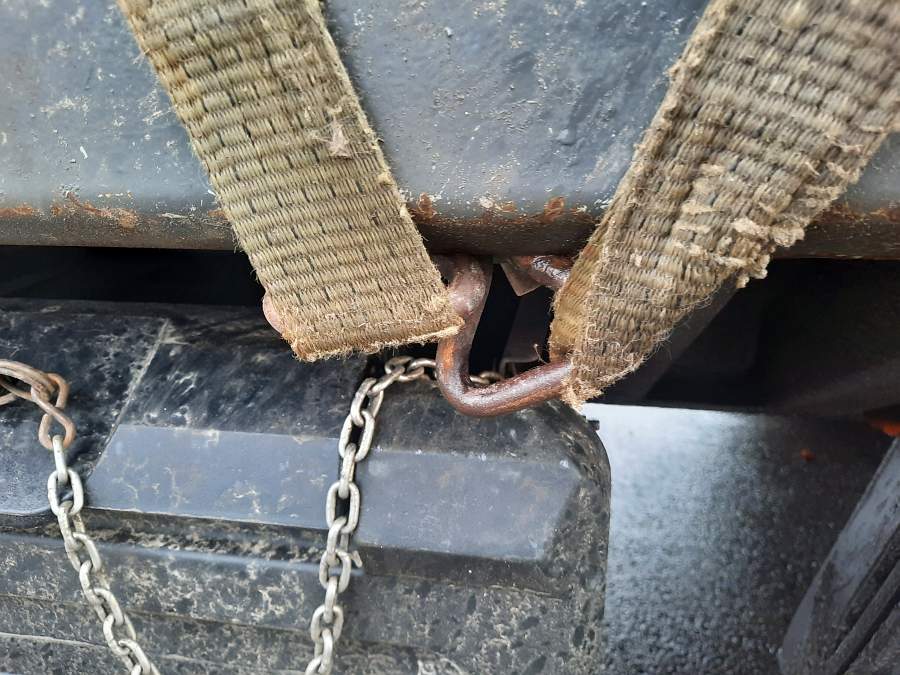
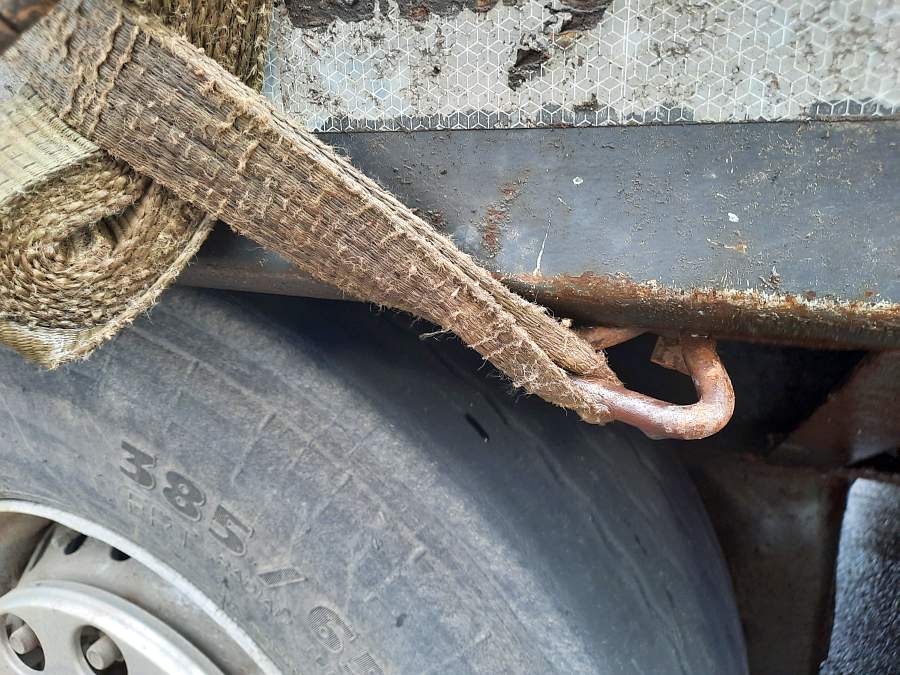
Figures 4 and 5 [Raymond Lausberg]
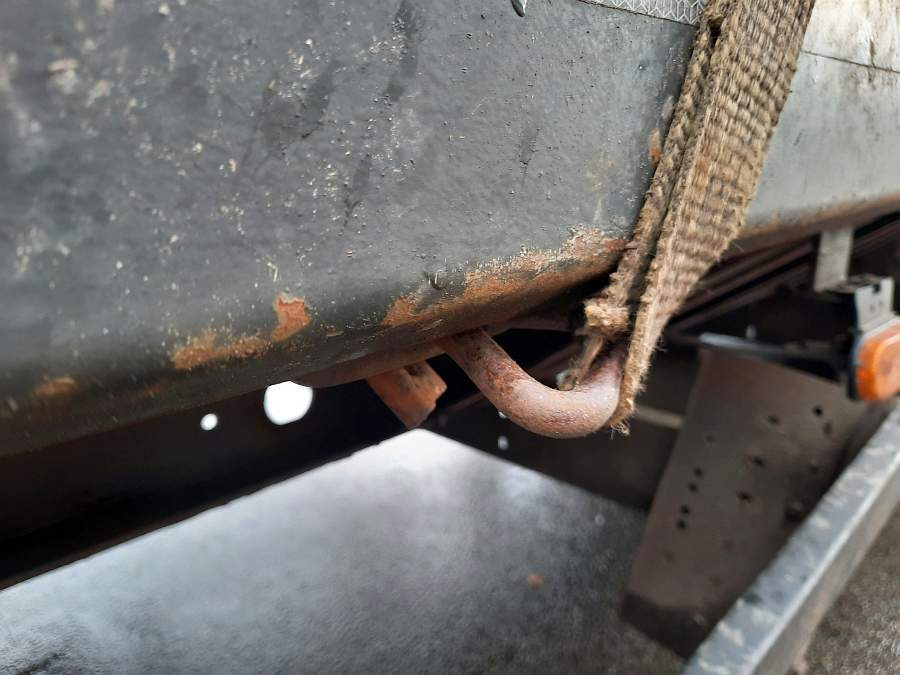
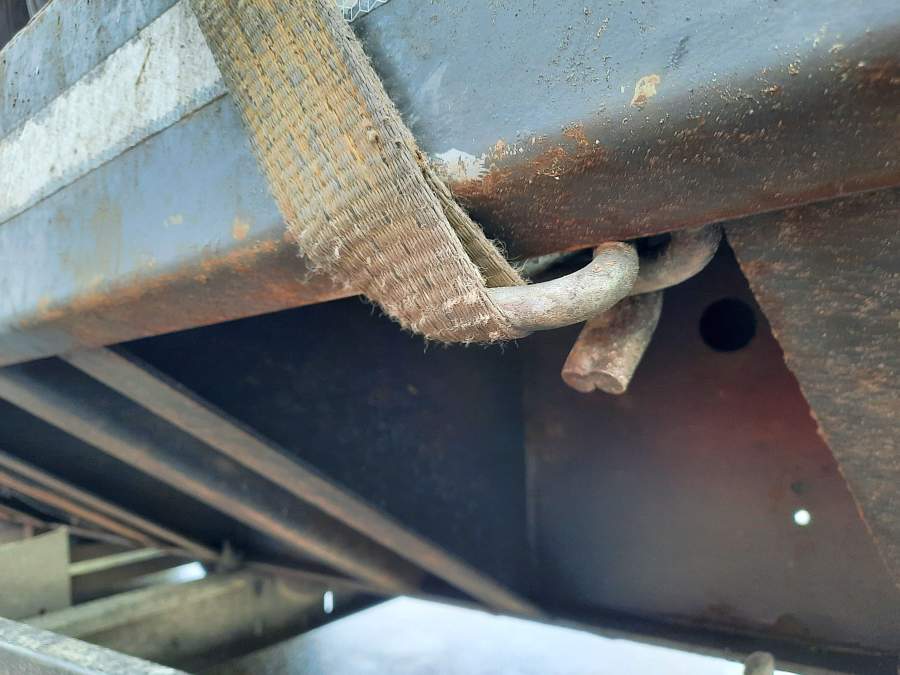
Figures 6 and 7 [Raymond Lausberg]
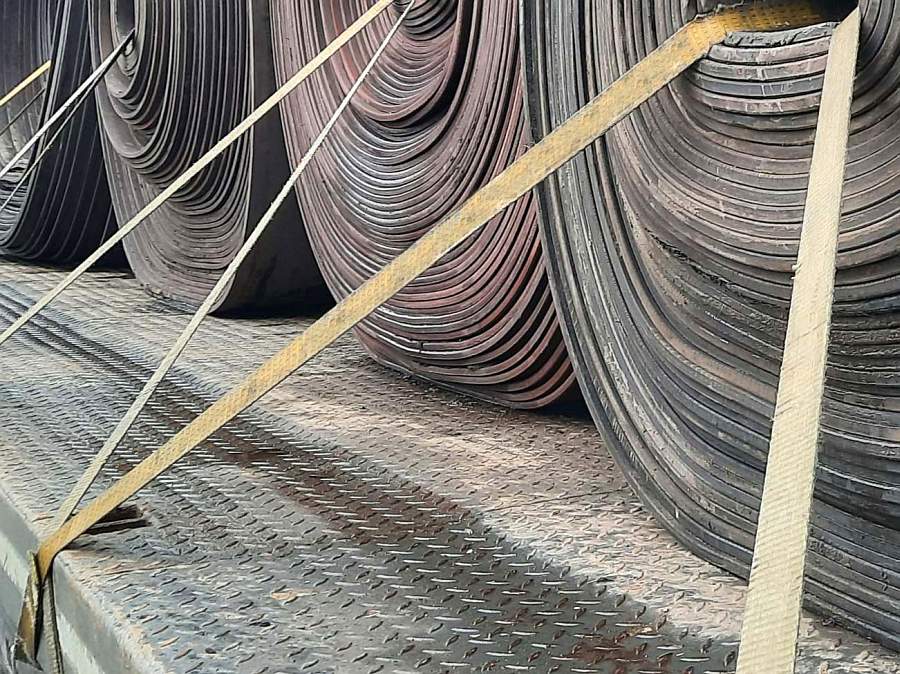
Figure 8 [Raymond Lausberg]
An attempt has been made to secure the load with direct lashings, which makes sense with a cargo such as this. Most obviously, there is a problem with the belts, their condition and the way they are attached. All of the belts give the impression that they reached the end of their useful lives long ago. The vehicle is not fitted with the load securing points required for this securing method, with the result that the belts and hooks have been thoroughly abused. Hooks are attached in a way that makes them liable to bend open and the belts are massively constricted. And no load-securing equipment will survive such treatment for long … as we can see.
How to secure the load properly:
In principle, the idea of securing this load more or less directly is a good one. But the way in which the idea was implemented leaves a lot to be desired.
- A load of 21 tonnes with rolling friction (in other words with no friction that is of any use for securing the load). To assume anything else would be criminally negligent, as the cargo is more or less cylindrical.
- The securing force needed to the front is 16,800 daN. And to the sides?
- Securing to the sides: As can be seen in Figure 8, the conveyor belts are very clean, as is the loading bed. Since we do not know the coefficient of friction μ of the material, we shall err on the side of caution and take a value of 0.4. In this case, the required securing force to the sides would be 300 daN for each roll. This corresponds to 750 daN of vertical pre-tensioning force (tie-down lashing).
- The problem lies with the steel cores with their sharp edges and square shape. This means that it is not possible to avoid pinching the belts, which is not good for them and which reduces the securing effect in unpredictable ways.
- Chains would be a good solution to the problem, as would lifting slings passed through the core. These would provide load securing points on both sides.
- Securing force required to the front: If the load securing equipment (chains or belts and lifting slings) are taken to the rear at a good, shallow angle, six chains or sling and belt combinations would be sufficient. Because we do not know the angles created when the load is secured, we shall assume 1500 daN of securing force per belt. Two belts for each roll make 3000 daN, which we then multiply by six. Giving 18,000 daN of securing force. If we are using belts and lifting slings, we would need 6 lifting slings and 12 belts. If it is possible to use chains of a sufficient length, only six are required.
- Securing to the rear: Beware! In this direction also, we are dealing with rolling friction, which we cannot use for load securing calculations. This requires 10,500 daN of securing force, and if we assume that the load is secured as described above, we need four chains or belt/sling combinations through four different rolls. Here again, we need to take care to take the belts or chains to the front at a good, shallow angle.
- Securing to the sides: Because we erred on the side of caution and assumed a coefficient of friction μ of 0.4, each roll also requires a tie-down lashing with 750 daN of pre-tensioning force acting as close to vertically as possible. If it is not possible to establish a good, lasting pre-tensioning force because the material is too flexible, loop lashings must be used to secure the load to the sides. And we actually prefer these anyway!
- Idea:
If we were able to pass a shaft with appropriate load-securing points at each end through each roll and secure these, this would simplify securing this load considerably.
High-capacity load securing points, e.g. 5000 daN, would significantly reduce the effort involved, as this would allow the strength of chains (or, of course, belts with an LC of 5000 daN) to be exploited to the full. In this case, it would only be necessary to secure two rolls against movement to the front and two rolls against movement to the rear. - The right load-securing points that allow shallow angles to be achieved are of crucial importance, as is clearly demonstrated by this Photo of the Month.
- As always, the appropriate equipment makes work a lot easier and makes for greater safety.
Your load securing columnists as always wish you a safe journey.
Back to beginning
